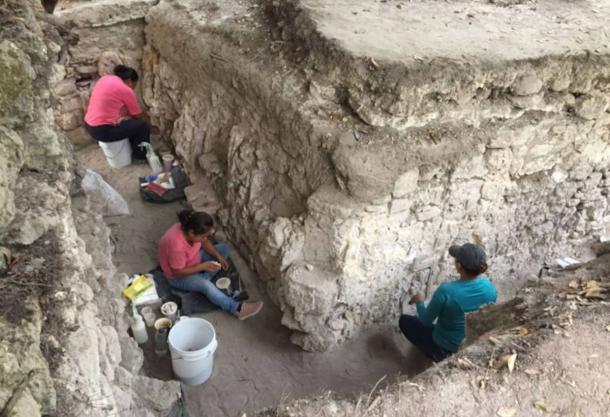🔴 Website 👉 https://u-s-news.com/
Telegram 👉 https://t.me/usnewscom_channel
Archaeologists in the Archaeological Zone of Dzibanché, Mexico, have unearthed three ancient relief facades depicting motifs tied to the powerful Kaanu’l dynasty, a ruling Maya lineage represented by the serpent symbol ( kaan in Mayan). These newly uncovered reliefs, located in structures near Ball Game II in Dzibanché, date back to the Early Classic period (AD 500-600) and depict symbols of power and ancestry, reinforcing Dzibanché’s role as an influential seat of the Kaanu’l lineage.
A team of 98 people, including specialists and assistants, is working on the conservation of the remains. (Courtesy of Sandra Balanzar/INAH)
Discovering the Serpent Dynasty at Dzibanché
The Kaanu’l dynasty ruled across present-day Mexico, Belize, and Guatemala, and this latest discovery deepens understanding of their reach and influence. The find includes two platforms adorned with reliefs, likely constructed during Dzibanché’s height, reports INAH.
“For us, this is a great find,” remarked Sandra Balanzario Granados, head of the Promeza project at Dzibanché, which made the excavation possible.
INAH has discovered three facades with reliefs alluding to the Kaanu’l dynasty, in the Dzibanché Archaeological Zone. (Gibrán Huerta/INAH)
The reliefs reveal three distinct scenes across the platforms. The first depicts two guardians flanking a pedestal intended for a sculpture, and inscribed glyphs referring to a Kaanu’l ruler. In the second relief, individuals allude to Kaanu’l ancestors amid symbols of stars and serpents, common in Maya and Teotihuacan iconography, while the third scene displays mythical animals associated with constellations.
A recurring motif in all three reliefs is the intertwined serpent, symbolizing the Kaanu’l rulers’ divine lineage and their status as earthly representatives of the gods.
The reliefs date from the Early Classic period, between 500 and 600 AD. (Gibrán Huerta/INAH)
Preservation of the Stuccoed Facades
The reliefs are crafted from lime mortar and stone dust with vivid red, blue, yellow, and black paint remnants, and require careful restoration due to their exposure to weathering.
A team of specialists in archaeology, restoration, and physical anthropology led by Balanzario Granados, has been working since December 2023 to document and preserve these fragile artworks. The process will continue through December 2024, with potential plans for photogrammetric models to create replicas, allowing the facades to be accessible to the public without risking the originals.
The reliefs have undergone a meticulous restoration process, as they retain traces of red, blue, yellow and black colors. (Gibrán Huerta/INAH)
Legacy of the Kaanu’l Dynasty and Dzibanché
This site, inhabited by the Kaanu’l in the Early and Late Classic periods (AD 250-650), served as a powerful cultural and military center until the dynasty split, with one faction remaining in Dzibanché and another moving to Calakmul. As Balanzario Granados explained, “Dzibanché is rich in buildings and offerings that narrate the beliefs and military achievements of this powerful lineage.”
The ongoing work at Dzibanché, facilitated by the Mexican Program for the Improvement of Archaeological Zones (Promeza), has already led to the restoration of several major structures. This latest discovery of the Kaanu’l dynasty’s emblematic serpentine motifs not only highlights Dzibanché’s prominence within the Maya world but also provides an intimate look at the religious and political narratives that shaped ancient Mesoamerica.
Top image: One of the Kaanu’l dynasty plaster reliefs found at Archaeological Zone of Dzibanché, Mexico. Source: Gibrán Huerta/INAH
By Gary Manners
